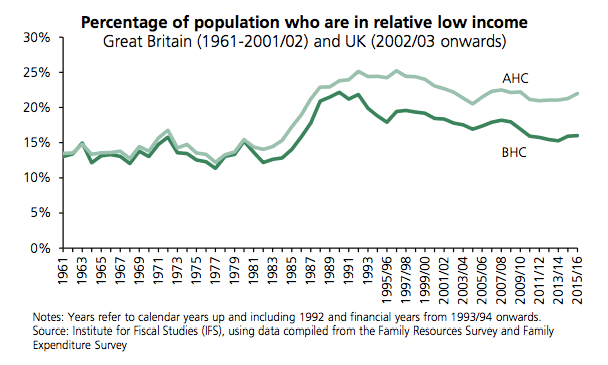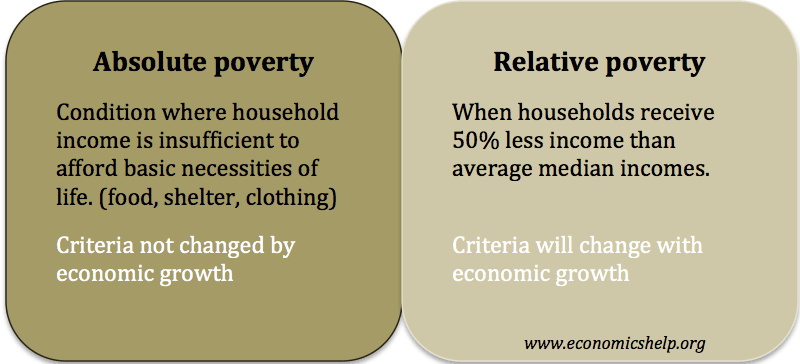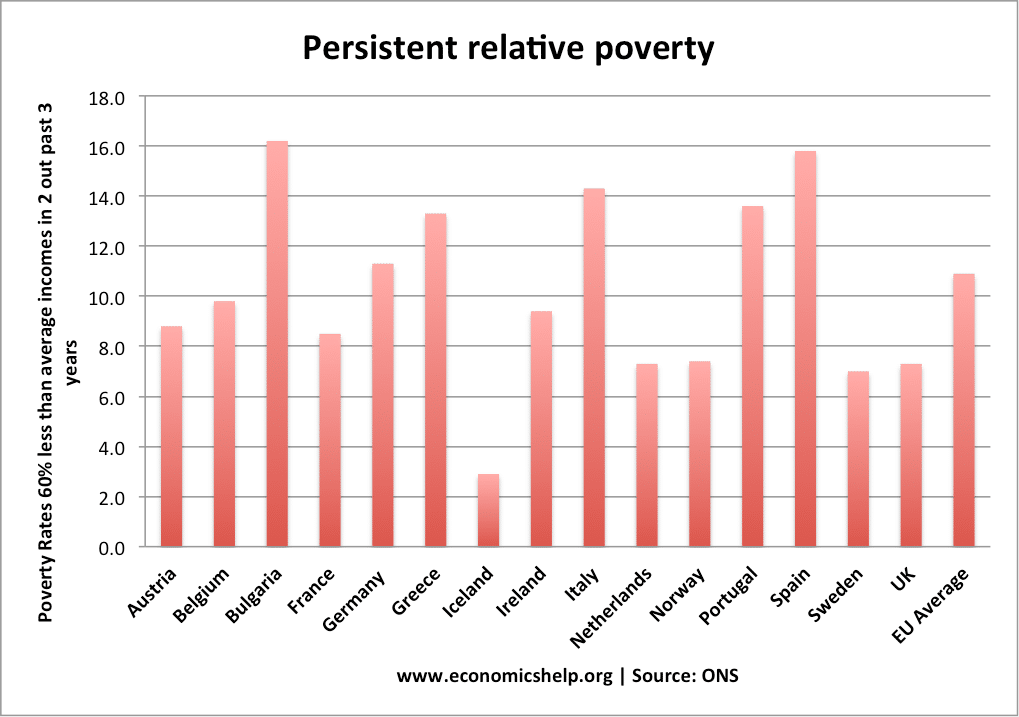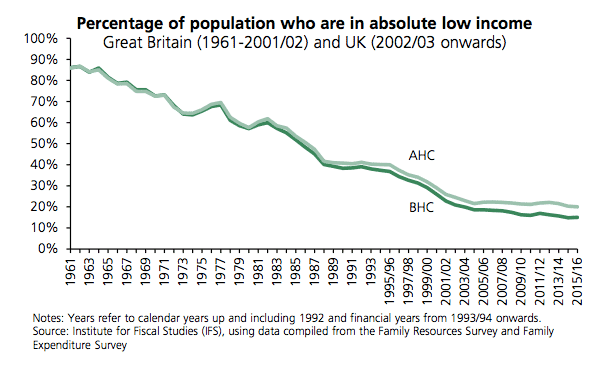There are two main classifications of poverty:
- Absolute poverty – is a condition where household income is below a necessary level to maintain basic living standards (food, shelter, housing). This condition makes it possible to compare between different countries and also over time.
- Relative poverty – A condition where household income is a certain percentage below median incomes. For example, the threshold for relative poverty could be set at 50% of median incomes (or 60%)
Absolute poverty
There will be different concepts of what is a necessary level to maintain basic living standards. The United Nations defined absolute poverty as
“a condition characterised by severe deprivation of basic human needs, including food, safe drinking water, sanitation facilities, health, shelter, education and information. It depends not only on income but also on access to services.”
UN World Summit for economic development (1995)
Absolute poverty could be set at a constant real income level, e.g. real income of $500 per year. However, it would have to take into account different living standards between countries. $500 would be insufficient to gain shelter in New York, but maybe in Africa. The UN summit on poverty called for countries to develop their own measure.
Also, over time concepts of what constitutes ‘basic necessities of life’ may change. In the eighteenth century, it may be food and shelter, whereas, in modern-day Western economies, we may expand it to include food, shelter, electricity, cooking, access to basic health care.
The World Bank define poverty as
“Poverty is pronounced deprivation in well-being, and comprises many dimensions. It includes low incomes and the inability to acquire the basic goods and services necessary for survival with dignity.”
Poverty line
This is a concept used to give a rough guide to poverty across countries. Originally introduced as $1 a day. In 2015, the World Bank reset the poverty line to $1.90 a day (using PPP exchange rates) (World Bank)
Relative poverty
Relative poverty is useful for showing the percentage of the population who have been relatively left behind. Concepts of relative poverty are very different in the 2010s to a century ago.
Primary and secondary poverty
Primary poverty is defined as a situation where income is insufficient to meet basic needs – even if every penny is spent wisely.
Secondary poverty is defined as a situation where money is misspent on luxuries – leaving insufficient disposable income to buy necessities.
Joseph Rowntree in his groundbreaking study “Poverty: a study of Town Life” (1899) investigated living conditions in York and found 24% of the population were living in primary poverty. His detailed methodology showed that poverty was due to insufficient income and not due to the extravagance of spending often attributed to poverty by the Victorians.
Poverty from a sociological perspective
Peter Townsend defined poverty not just from the perspective of income – but can people participate in activities which make them feel part of society. He defined it as:
“Individuals, families and groups in the population can be said to be in poverty when they lack the resources to obtain the type of diet, participate in the activities and have the living conditions and the amenities which are customary, or at least widely encouraged or approved in the societies to which they belong. Their resources are so seriously below those commanded by the average family that they are in effect excluded from the ordinary living patterns, customs, and activities (Townsend, P. (1979). Poverty in the United Kingdom. London: Penguin page 31)
Persistent poverty
Persistent poverty is defined as a situation where households find income is less than 60% of median incomes for 2 out of 3 years. This is important as long-term poverty has greater consequences than short-term.
Levels of persistent relative poverty in the EU – effectively shows degree of inequality.
Multidimensional Poverty Index (MPI)
published by the UN in 2010. It measures poverty as an acute deprivation of essential aspects of life. It measures three key targets – living standards, education and healthcare.
MPI at United Nations
Absolute and relative poverty in the UK
This uses a definition of absolute low income by 1999 standards. It shows that real incomes have significantly increased.

Related
Published 24 Nov 2019, Tejvan Pettinger. www.economicshelp.org




